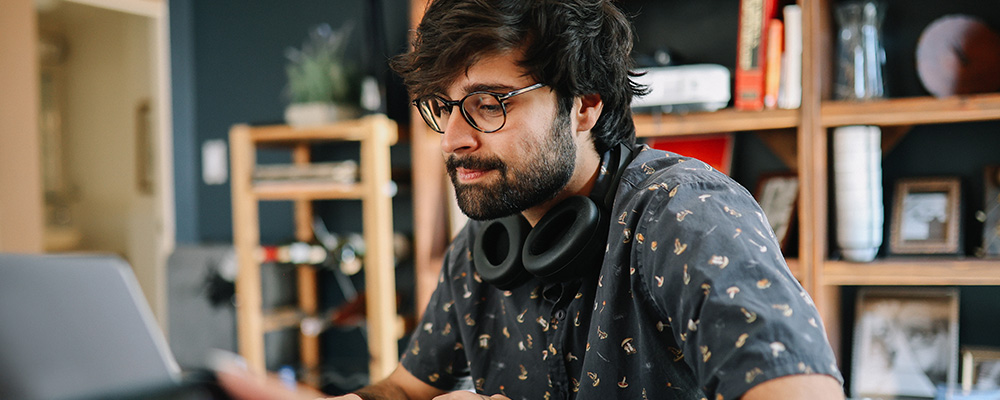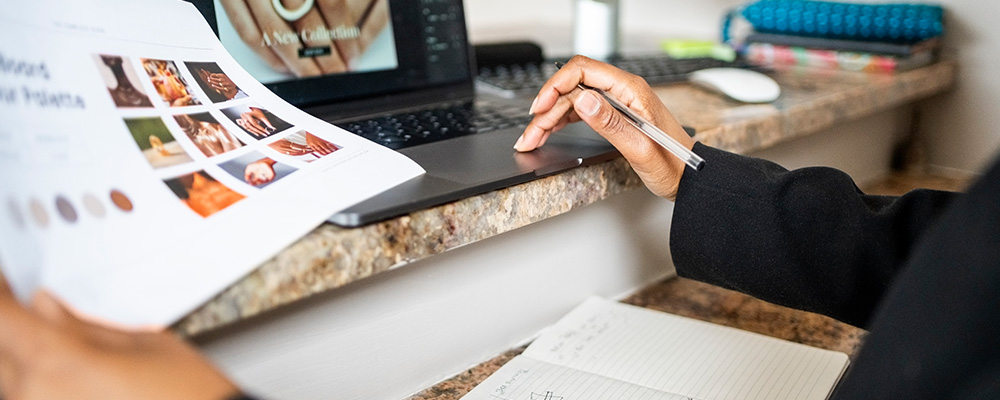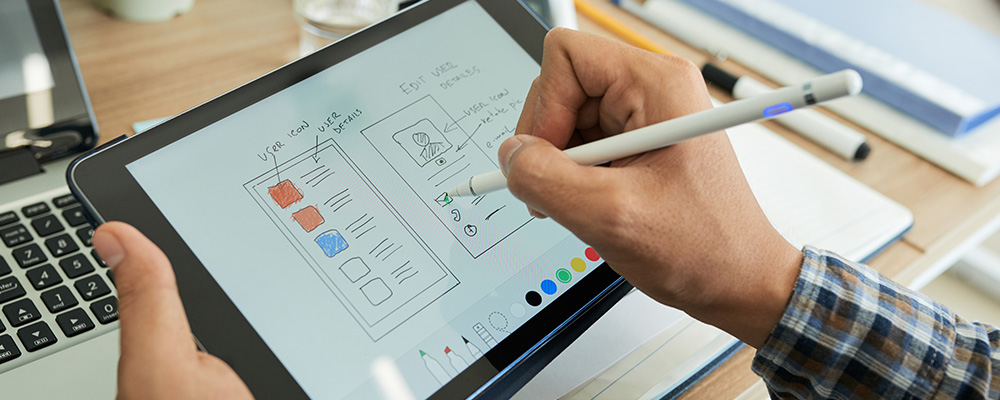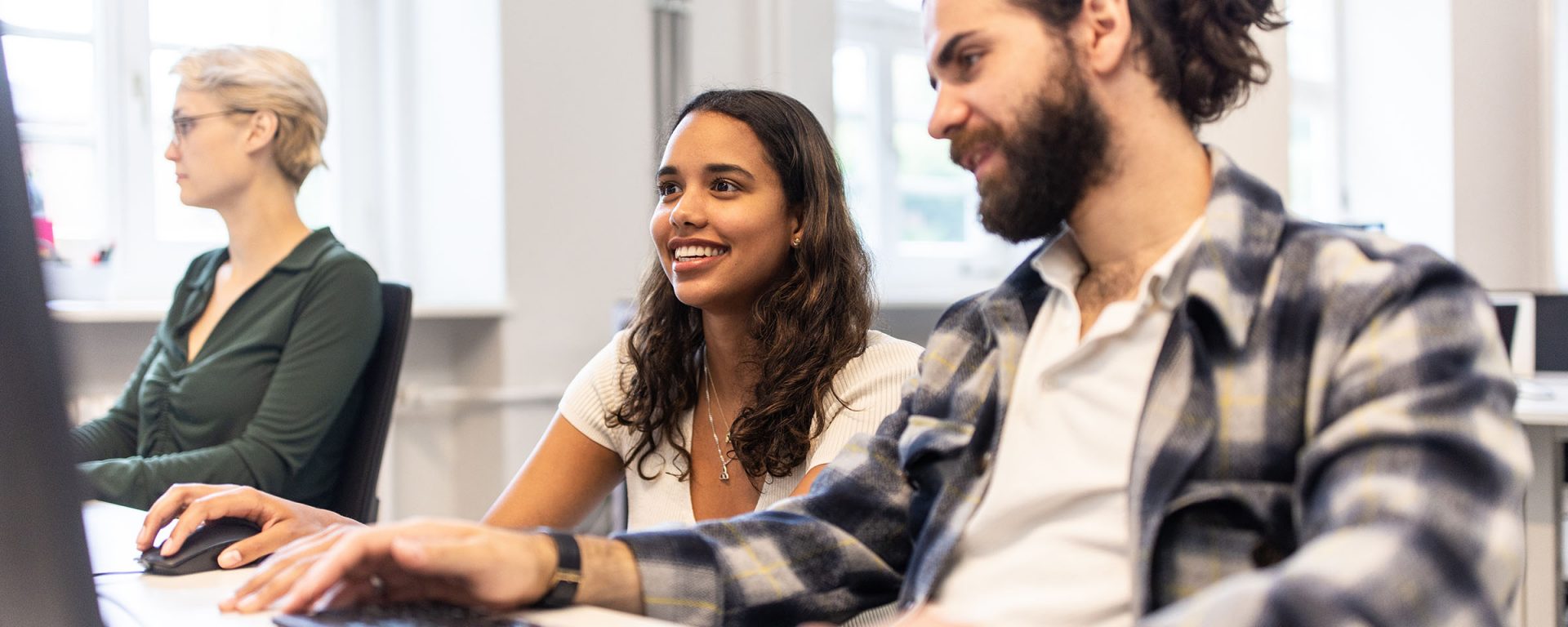In an increasingly digital world, having an engaging online presence isn’t just important – it’s crucial. That’s where web designers come in. Creating good-looking websites that people love to visit is now essential for any business or organisation. So, if you’re into the idea of becoming a web designer, guess what? You’ll be in demand. But how do you actually become a web designer? What’s the secret for success? Let’s dive in and find out.
Here’s what we’ll cover:
- Why web design is important?
- What does a web designer do?
- Where do web designers work?
- How to become a web designer?
- What skills do web designers need?
- What soft skills are useful?
- Next steps

Why web design is important
Let’s get real. Nowadays, the internet is our go-to spot for pretty much everything – info, stuff we need, things we want to buy. It sometimes feels like everyone’s living online 24/7. And that’s why having an awesome website matters.
First impressions count: When people hit up a site, that’s often their first taste of what you’re all about. A killer design and a website that works for the user is going to hook people in, build their trust, and keep them coming back. Plus, it can set you apart, especially when everyone’s fighting for attention.
User experience: User experience (UX) is, well, everything. Navigating a site should be smooth sailing, with seamless navigation, intuitive layouts and interactive elements that keep people around and wanting more.
Brand identity: Web design is one of the ways organisations can stand out. Clever design can make the brand come across loud and clear. Compelling visuals and cohesive design on a website basically shout: “This is us!”
SEO-friendly design: And of course, every organisation wants to be top of the search pile. That’s where SEO-friendly design comes in. Web designers are masters of the SEO game, creating clean code and fast load times, so people can find a site easily.
Conversion optimisation: Last but not least, you want people to actually do things on your site, right? That’s where conversion comes in. Your designs will nudge people to take action, whether it’s signing up, buying something or hitting that ‘subscribe’ button.
So basically, web design is the secret weapon in an organisation’s success. It’s how you get people excited, keep them coming back for more and make real connections with your audience.
What does a web designer do?
Web designers are the architects of the online world. They dream up, craft and bring to life visually stunning websites that pack both style and substance. Check out some of the responsibilities you’ll have in a career as a web designer.
Client collaboration: You’ll engage with clients to dig deep into their goals, preferences and brand identity.
Design development: You’ll whip up wireframes, mockups and prototypes to bring your visions to life, tweaking and perfecting based on what the team wants.
Visual design: You’ll select colour combos, fonts, images and graphics to make websites pop and align with the brand you’re working for and the latest industry trends.
Front-end development: You’ll write clean, semantic HTML and CSS code that turns design concepts into fully functional web pages, making sure everything looks slick on every type of screen.
Usability testing and optimisation: You’ll test-drive sites, gather feedback and smooth out the rough spots to make sure visitors have the best experience possible.
In short, web designers blend their creative flair and technical know-how to craft digital experiences that captivate audiences, foster brand loyalty and give businesses the boost they need.

Where do web designers work?
It’s pretty much the case that wherever there’s an industry, there’s a need for web designers. So you’ll have loads of options. You could work within corporate settings, as part of an in-house design team for a start-up or a multinational corporation. Or dive into the dynamic landscape of creative agencies, where you’ll work with lots of different clients to bring their digital visions to life.
Moreover, thanks to freelance sites and remote work, you can totally carve your own path. Once you’ve got some chops and a killer portfolio, you can strike out on your own, with the freedom of working from anywhere and linking up with clients all over the globe.
Picture it: as a web designer, you could be working in an office, kicking back at home… or even lying on a tropical beach.
How to become a web designer
Becoming a web designer is all about mixing things up with education, experience and keeping your skills sharp.
While there are no strict prerequisites, getting a degree like Charles Sturt’s Bachelor of Information Technology1 is going to kickstart your journey.
This degree packs a punch, giving you detailed knowledge on design principles, programming languages and all the digital tech you need. Plus, you’ll flex your skills in the real world with professional work placements.
But it’s not just about hitting the books. An impressive portfolio is key for web design pros to show what they can do. Start small with personal projects, lend a hand to non-profits or take on freelance gigs to beef up your portfolio and get hands-on experience.
It’s also important to keep your finger on the pulse with industry news, workshops and online communities. It’s a fast-moving game, and staying ahead means staying sharp.

What skills do web designers need?
Web designers need a robust set of technical skills. Mastering design software like Adobe Photoshop and Illustrator lets you dream up and bring to life stunning visuals with precision and finesse. Then add a solid understanding of HTML and CSS and you’re set to turn your visions into slick, responsive web pages that work like a charm on any device.
Making sure your designs look sharp across all digital platforms is also a must in today’s game. And when you’ve got the UI/UX principles down pat, you’ll be crafting designs that speak straight to your audience’s needs. It’s all about creating experiences that leave them wanting more.
What soft skills are useful?
Beyond knowing the tech stuff, smashing it in the web design game also means having some serious soft skills in your toolkit.
- Creativity:This one kinda goes without saying, but it bears repeating. Web design is all about thinking outside the box and then dreaming up designs that speak to your audience.
- Communication:Being able to chat with clients, understand their needs and also explain your designs is key.
- Problem-solving:You’ll hit roadblocks, sure you will. But with adaptable problem-solving skills, you’ll find your way around them.
- Time management:Learn to juggle tasks, manage your time like a boss and deliver top-notch work on time.
- Adaptability:The web world changes faster than you can say “HTML.” Stay flexible, keep learning and be at the cutting edge of industry trends.
- Attention to detail:Perfecting your designs means sweating the small stuff and making sure every little thing is right.
- Client management:Understand what they want, handle feedback like a pro and always keep the lines of communication open.

Guess what? You could score an offer to study the Bachelor of Information Technology based on your soft skills. Check out the Charles Sturt Advantage early offer program.
Next steps
So, has that got you thinking seriously about a rewarding career as a web designer? Great. Kickstart your journey to success with Charles Sturt.
If you want some more info about how to become a web designer, reach out to our university advisers. They’re more than happy to answer any questions and chat through your options.
1CRICOS: 012006F


You must be logged in to post a comment.